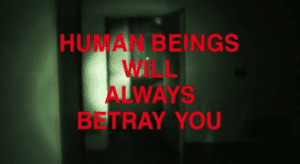
A Guide for Psychotherapists and Cultural Critics
Why Psychotherapists Should Watch Adam Curtis
For mental health professionals seeking to understand the cultural waters their clients swim in, Adam Curtis’s documentaries offer an invaluable lens. His films map the unconscious narratives that shape modern anxiety, alienation, and the collapse of collective meaning-making. Curtis doesn’t just document history—he performs a kind of cultural psychoanalysis, revealing the hidden emotional logic that governs how power operates and how individuals internalize systems of control.
Therapists working with clients struggling with feelings of powerlessness, conspiracy thinking, or existential confusion will find Curtis’s work illuminating. His films demonstrate how personal neuroses mirror societal ones, how individual trauma connects to collective history, and how the stories we tell ourselves about power shape our capacity for agency. By understanding Curtis’s method—which mirrors the associative, emotionally-driven logic of the unconscious mind—therapists can better grasp the cultural narratives their clients inhabit.
The Curtis Method: Emotional Through-Lines as Cultural Diagnosis
Adam Curtis has pioneered a documentary form that operates more like a fever dream than a traditional argument. His films construct what might be called “emotional through-lines” rather than logical ones—connections that feel intuitively true even when they leap across decades, continents, and seemingly unrelated phenomena. This approach mirrors how conspiracy theories function, but Curtis weaponizes this form to reveal actual historical patterns rather than fabricated ones.
The Language of Conspiracy Theory as Truth-Telling Device
Curtis’s genius lies in recognizing that the formal structure of conspiracy thinking—its ability to connect disparate events through emotional resonance and pattern recognition—can be used to illuminate real historical forces. Where conspiracy theorists see puppet masters, Curtis sees systems; where they find secret cabals, he identifies ideological movements and their unintended consequences.
This methodology makes Curtis’s own work vulnerable to the same deconstruction he applies to culture. His narratives can feel overly deterministic, cherry-picked, or reductive. Yet this vulnerability is part of their power. Curtis shows us that all historical narratives are constructions, including his own. The question isn’t whether his stories are “true” in some objective sense, but whether they help us see patterns we couldn’t perceive before.
The Spectacle of Archive Footage
Curtis’s visual style transforms BBC archive footage into a hypnotic collage that operates on multiple levels simultaneously. He juxtaposes bureaucrats dancing at office parties with footage of nuclear tests, aerobics classes with surveillance technology, creating a visual language that speaks directly to the unconscious. This technique mirrors how trauma and cultural memory actually function: through association, repetition, and the uncanny return of repressed images.
Deconstructing Curtis: The Critique of His Own Method
Curtis’s films invite the same critique he applies to others. His narratives can feel:
Overly Deterministic: His stories sometimes suggest an inevitability to historical development that ignores contingency and resistance.
Cherry-Picked: By selecting footage that fits his emotional argument, Curtis can make any connection seem inevitable.
Nostalgic: Despite his critiques, Curtis often seems to long for a time when grand narratives provided meaning, even as he shows their destructive effects.
Masculine: His focus on systems and power can overlook lived experience, particularly of women and marginalized groups.
Paranoid: His method can tip into the very conspiracy thinking he critiques, seeing patterns where there might only be chaos.
Yet these limitations are also what make his work useful for therapists. Curtis shows us how all narratives about society and self are constructions, including therapeutic ones.
Therapeutic Implications: Using Curtis in Clinical Practice
Understanding Cultural Symptom Formation
Curtis’s films demonstrate how individual symptoms reflect cultural pathologies. When clients present with anxiety about surveillance, conspiracy thinking, or feelings of unreality, Curtis provides a framework for understanding these as rational responses to irrational systems.
The Politics of Mental Health
His work on psychiatry (particularly in “The Trap”) shows how diagnostic categories and treatment modalities reflect political ideologies. Therapists can use this to maintain critical awareness about their own practice.
Narrative Therapy Applications
Curtis’s method aligns with narrative therapy’s understanding that problems are maintained by dominant cultural stories. His films provide rich material for exploring how clients have internalized cultural narratives about success, happiness, and normality.
Working with Political Trauma
For clients struggling with political despair or activism burnout, Curtis’s films validate their perception that systems are failing while avoiding simple solutions. His work helps contextualize individual suffering within historical patterns.
Group Therapy Discussions
Curtis’s films work excellently as discussion prompts in group therapy, particularly for groups focused on social anxiety, meaning-making, or political engagement. The films’ emotional logic can unlock discussions that purely rational approaches might miss.
The Therapeutic Value of Emotional Truth
Adam Curtis’s documentaries offer therapists a unique tool for understanding the cultural unconscious that shapes our clients’ lives. His method, using emotional connections to reveal historical patterns, mirrors the associative process of therapy itself. While his narratives should be approached critically, they provide invaluable maps of the affective territories our clients navigate daily.
For mental health professionals, Curtis’s work serves as both diagnostic tool and treatment inspiration. His films remind us that individual suffering is never just individual, that the personal is always political, and that understanding the stories that shape us is the first step toward freedom from their constraints.
By engaging with Curtis’s emotional historiography, therapists can better help clients navigate a world where, as Curtis shows, the old stories have collapsed but new ones have yet to emerge. In this interregnum, his films provide not answers but better questions, not solutions but deeper understanding of the problems we face together.
Comprehensive Film Analysis
Pandora’s Box (1992)
Curtis’s first major series examines how rational systems designed to improve society invariably produce irrational outcomes. The series follows technocrats, economists, and social engineers whose attempts to create order unleash chaos.
Main Arguments: The series argues that post-war attempts to apply scientific rationality to human society failed because they couldn’t account for the complexity of human emotion and the unintended consequences of systems thinking. Each episode traces how a specific rational system (economic planning, game theory, nuclear strategy) created the opposite of its intended effect.
Key Footage and Clips:
- Soviet economic planners manipulating production figures
- RAND Corporation analysts playing nuclear war games
- British housing projects being demolished
- DDT spraying campaigns meant to eliminate disease
- The UK’s failed attempt at economic planning in the 1960s
Connecting the Dots: Curtis links the Soviet Union’s economic planning failures to similar technocratic fantasies in the West, showing how both systems shared a fundamental belief that human society could be managed like a machine. The series builds its emotional power through repetition: we see the same cycle of optimistic planning followed by catastrophic failure across different contexts.
The Century of the Self (2002)
Perhaps Curtis’s most influential work, this four-part series traces how Freud’s ideas about the unconscious were transformed by his nephew Edward Bernays into techniques for manipulating mass desire. It’s essential viewing for therapists interested in how psychological concepts shape consumer culture.
Main Arguments: The series argues that the shift from needs-based to desire-based capitalism fundamentally altered human consciousness. By teaching corporations and governments to speak to unconscious desires rather than rational needs, Bernays and his successors created a new form of control that operates through pleasure rather than repression.
Key Footage and Clips:
- Edward Bernays orchestrating the “Torches of Freedom” campaign to sell cigarettes to women
- Anna Freud’s psychoanalytic sessions with children
- Wilhelm Reich’s orgone accumulator experiments
- Focus groups in the 1990s revealing unconscious associations with products
- Clinton and Blair’s use of focus groups to shape policy
- The Esalen Institute’s encounter groups
- Stanford Research Institute’s Values and Lifestyles (VALS) consumer categories
Connecting the Dots: Curtis traces a line from Freud’s consulting room to the modern shopping mall, showing how techniques designed to heal neurosis were repurposed to create it. The series builds its argument through parallel editing: we see how each generation’s attempt to liberate the self becomes the next generation’s system of control. The encounter groups of the 1960s, meant to free people from social conditioning, become the focus groups of the 1990s, designed to exploit that freedom for profit.
The Power of Nightmares (2004)
This three-part series parallels the rise of radical Islamism and American neoconservatism, arguing that both movements filled the vacuum left by the collapse of grand political narratives with dark fantasies about hidden threats.
Main Arguments: Curtis argues that both movements share a common origin in the failure of liberal democracy to provide meaning, and both offer their followers a Manichean worldview where they are heroes fighting absolute evil. The series suggests that the “war on terror” is largely a fantasy maintained by both sides because it gives their lives purpose.
Key Footage and Clips:
- Sayyid Qutb’s execution in Egypt
- Leo Strauss teaching at the University of Chicago
- The siege of the Grand Mosque in Mecca
- Donald Rumsfeld’s “unknown unknowns” press conference
- Al-Qaeda training videos that Curtis argues are largely fictional
- The prosecution of supposed “sleeper cells” with no evidence
- Reagan-era propaganda films about Soviet threats
Connecting the Dots: Curtis uses parallel editing to show how Islamists and neoconservatives mirror each other: both believe that liberal society is decadent and needs to be saved through noble lies, both recruit followers by exaggerating threats, and both create the enemies they claim to fight. The series builds its argument through juxtaposition, showing how the rhetoric of cosmic struggle serves power on both sides.
The Trap (2007)
This series examines how a narrow, paranoid vision of human beings as self-interested automatons became the dominant political philosophy of our time. It’s particularly relevant for understanding the worldview that shapes contemporary mental health policy.
Main Arguments: Curtis argues that Cold War theories of human nature based on game theory and rational choice infected all areas of life, from psychiatry to economics to education. These theories, born from paranoia and mistrust, created the selfish, isolated individuals they claimed to describe.
Key Footage and Clips:
- R.D. Laing’s experimental psychiatric communities
- John Nash’s game theory experiments at RAND
- UK psychiatric hospitals emptying in the 1980s
- Thatcher’s poll tax riots
- Clinton’s welfare reform
- Isaiah Berlin’s lectures on negative liberty
- Targets and performance indicators in NHS hospitals
- The diagnostic criteria for mental illness expanding
Connecting the Dots: Curtis shows how the paranoid assumptions of game theory spread like a virus through institutions, replacing trust with metrics, care with contracts, and citizens with consumers. The series demonstrates how attempts to increase freedom based on these theories created new forms of invisible control.
It Felt Like a Kiss (2009)
This experimental film, created for the Manchester International Festival, represents Curtis at his most avant-garde. Originally accompanied by a live immersive theater experience, the film abandons traditional narration for pure emotional assault.
Main Arguments: The film argues that American culture colonized the world’s unconscious through pop music, Hollywood films, and consumer products, but that this colonization contained the seeds of its own violent rejection. The title comes from The Crystals’ song about domestic violence, suggesting that American power operates through a similar dynamic of seduction and abuse.
Key Footage and Clips:
- Doris Day films intercut with CIA operations
- The Crystals’ recording sessions
- MKUltra experiments
- Advertising for suburban homes mixed with nuclear test footage
- Patty Hearst’s kidnapping and transformation
- AIDS panic footage
- Saddam Hussein’s CIA connections
- Bin Laden fighting Soviet forces with American weapons
Connecting the Dots: Without narration, Curtis creates connections purely through rhythm and juxtaposition. Pop songs provide the emotional score while images accumulate into a nightmare vision of American innocence curdling into horror. The film suggests that every attempt to spread “freedom” creates its opposite.
All Watched Over by Machines of Loving Grace (2011)
This series examines how computer networks and ecological thinking merged to create a new ideology where humans are just nodes in self-regulating systems.
Main Arguments: Curtis argues that the dream of computer networks creating a stable, self-organizing society is a fantasy that ignores power and conflict. He traces how this ideology infected everything from the tech industry to environmental science to development economics, always promising harmony but delivering chaos.
Key Footage and Clips:
- Ayn Rand’s inner circle meetings
- Silicon Valley entrepreneurs in the 1990s
- The collapse of the Congo after independence
- Communes attempting to live without hierarchy
- Alan Greenspan’s congressional testimony
- Geodesic domes and early computer graphics
- Rwandan genocide footage
- Nature documentaries showing ecosystem “balance”
Connecting the Dots: Curtis connects Ayn Rand’s philosophy to Silicon Valley libertarianism to the failure of Western intervention in Africa, arguing that all share a common delusion: that rational self-interest will create order without politics. The series shows how the metaphor of the “ecosystem” became a way to avoid questions of justice and power.
Bitter Lake (2015)
Released exclusively on BBC iPlayer, this film uses the story of Afghanistan to tell a larger tale about how the West’s simple stories about good and evil have collapsed into incoherence.
Main Arguments: Curtis argues that Western powers have lost the ability to understand the complex world they’ve created, retreating into increasingly simplified narratives that bear no relationship to reality. Afghanistan becomes a metaphor for this confusion, a place where every attempt at intervention makes the situation more incomprehensible.
Key Footage and Clips:
- Helmand Valley dam construction by Americans in the 1950s
- Saudi Arabia’s deal with the US after 1973 oil crisis
- Soviet soldiers dancing in Afghanistan
- British troops unable to distinguish friend from foe
- Afghan soldiers high on heroin
- Banking computer systems creating financial instruments no one understands
- Drone footage of wedding parties
- The endless cycle of Afghan allies becoming enemies
Connecting the Dots: Curtis creates a hallucinogenic narrative that mirrors the confusion it describes. Stories begin and trail off, characters appear and vanish, and the chronology becomes deliberately unclear. The film’s form embodies its argument: that we’ve lost the ability to create coherent narratives about power.
Original Footage Highlight: Extended, unedited footage from British forces’ helmet cameras shows soldiers wandering through Afghan villages, unable to communicate or understand what’s happening around them, a perfect metaphor for Western intervention.
HyperNormalisation (2016)
Curtis’s longest film argues that since the 1970s, politicians and financiers have constructed a simplified fake world while the real world spins out of control.
Main Arguments: The film suggests that everyone knows the system is failing but no one can imagine an alternative, so we retreat into a fake stability. From Syria to cyberspace, from Trump to Brexit, Curtis traces how the powerful gave up on changing the world and decided to manage our perceptions instead.
Key Footage and Clips:
- New York’s bankruptcy in 1975
- Hafez al-Assad’s strategic use of suicide bombing
- Early internet utopians predicting digital democracy
- Occupy Wall Street’s deliberation circles
- Trump’s reality TV career
- Putin’s theater director Vladislav Surkov creating political spectacle
- Gaddafi portrayed as supervillain then ally then enemy again
- Social media echo chambers
- UFO conspiracy theories spread by intelligence agencies
Connecting the Dots: Curtis weaves together seemingly unrelated stories to show how the retreat from political complexity created our current moment. The film argues that both Trump and Brexit are symptoms of this condition: spectacular gestures that change nothing while appearing to change everything.
Can’t Get You Out of My Head (2021)
Curtis’s most ambitious work, a six-part series subtitled “An Emotional History of the Modern World,” attempts to explain how we arrived at a moment where nothing seems to make sense anymore.
Main Arguments: The series argues that individualism, which promised to free us, has trapped us inside our own heads. Curtis traces how both democracy and authoritarian systems have given up on changing society, instead managing populations through surveillance and emotional manipulation. The series suggests we’re living through the end of the grand narratives that gave meaning to modern life.
Key Footage and Clips:
- Jiang Qing (Mao’s wife) watching Hollywood films during the Cultural Revolution
- Behavioral psychology experiments on both sides of the Iron Curtain
- Black radicals confronting the limits of individual liberation
- The Sackler family creating the opioid crisis
- Tupac’s mother in the Black Panthers
- British colonial officials measuring skulls in Kenya
- Soviet dissidents discovering the West isn’t what they imagined
- Tech workers in China and Silicon Valley creating parallel surveillance systems
- Michael X’s transformation from activist to cult leader
- Jim Garrison’s JFK conspiracy theories
Connecting the Dots: Curtis creates his most complex web yet, showing how the collapse of collective politics in both East and West led to a retreat into conspiracy theories, individualism, and technological control. The series argues that we’re all trapped in a system nobody believes in but nobody can escape.
Original Footage Highlight: Extended interviews with Jiang Qing reveal how she used American films to imagine a new Chinese culture, showing how revolutionary movements often contain their own contradictions.
Russia 1985-1999: TraumaZone (2022)
This seven-part series uses raw BBC footage from the collapse of the Soviet Union to create an immersive experience of societal breakdown.
Main Arguments: Curtis argues that the collapse of the Soviet system prefigured the current Western crisis of meaning. The series shows how the end of communism didn’t lead to freedom but to oligarchy, chaos, and nostalgia for stability, even if that stability was based on lies.
Key Footage and Clips:
- Citizens wandering through empty stores
- Oligarchs dividing up state property
- Elderly people selling their possessions on the street
- Young entrepreneurs creating pyramid schemes
- Chechnya war footage
- Orthodox priests blessing nuclear weapons
- Moscow rave culture emerging in abandoned buildings
- Yeltsin drunk at public events
- Putin’s rise through the chaos
Connecting the Dots: By removing his usual narration, Curtis lets the footage speak for itself, creating a more direct emotional experience of collapse. The connections emerge through repetition and accumulation: the same faces appearing poorer, the same buildings decaying, the same promises broken.
1. Archive Archaeology Curtis mines the BBC archives for footage that was never meant to be seen together. A nuclear test becomes a metaphor for psychological explosion; aerobics classes represent the disciplining of bodies under neoliberalism; corporate training videos reveal the unconscious of capitalism.
2. Musical Counterpoint His use of pop music creates emotional associations that bypass rational analysis. When he plays “Baby Love” over footage of American bombing campaigns, he’s not making an argument but creating a feeling about the relationship between American cultural power and military violence.
3. Repetition and Rhythm Curtis uses repetition like a musical composer. The same images return in different contexts, accumulating new meanings. A shot of people dancing becomes first joyful, then sinister, then tragic as it appears across different historical moments.
4. The Uncanny Return His films are full of moments where the past erupts into the present. Old footage of IBM computers predicts surveillance capitalism; Reagan-era exercise videos prefigure the quantified self movement; Soviet propaganda techniques reappear in Western social media.
5. Affective Overwhelm Curtis deliberately creates moments of sensory overload where the connections between images move faster than conscious thought. These sequences work like the dream sequences in therapy, revealing connections that logical analysis might miss.
Bibliography and Further Reading
Books on Adam Curtis and His Method
- “The Century of the Self: How Politics and Business Learned to Create and Manipulate Mass Desires” by Adam Curtis (companion to the series)
- “All Watched Over by Machines of Loving Grace” by Richard Brautigan (poem that inspired Curtis)
- “The Society of the Spectacle” by Guy Debord
- “Simulacra and Simulation” by Jean Baudrillard
Related Documentary Theory
- “The Image of the World and the Inscription of War” by Harun Farocki
- “Essays on the Essay Film” edited by Nora M. Alter and Timothy Corrigan
- “The Politics of Documentary” by Michael Chanan
Psychotherapy and Culture
- “The Politics of Experience” by R.D. Laing
- “Civilization and Its Discontents” by Sigmund Freud
- “The Sane Society” by Erich Fromm
- “Madness and Civilization” by Michel Foucault
Articles and Essays
- The Paranoid Style in American Politics by Richard Hofstadter
- Adam Curtis and the Secret History of Everything – The New Yorker
- The Desperate Edge of Now – Frieze Magazine
- Adam Curtis’s Essential Counterhistories – Vulture
Mental Health and Neoliberalism
- Neoliberalism and Mental Health – Journal of Mental Health
- The Therapy Industry: The Irresistible Rise of the Talking Cure – The Guardian
Surveillance and Paranoia
- The Age of Surveillance Capitalism by Shoshana Zuboff
- Paranoia Within Reason: A Casebook on Conspiracy as Explanation edited by George E. Marcus

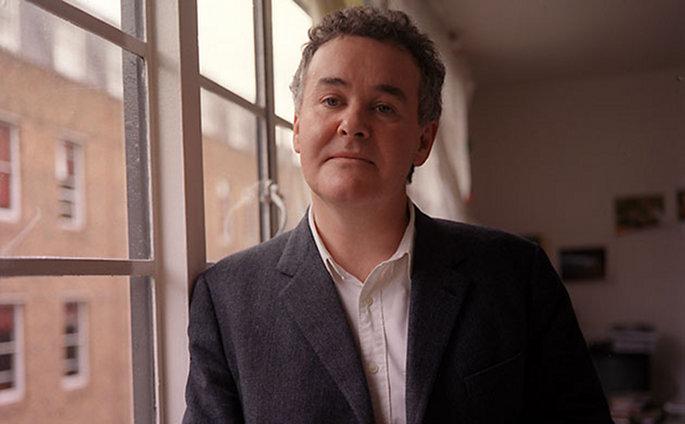

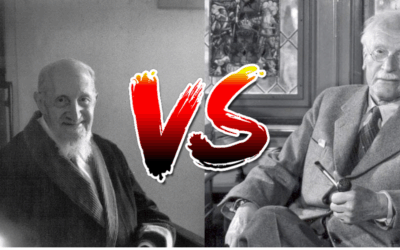
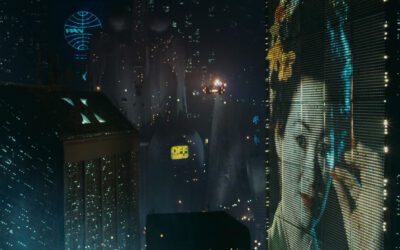





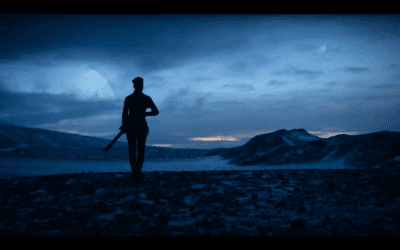
















0 Comments